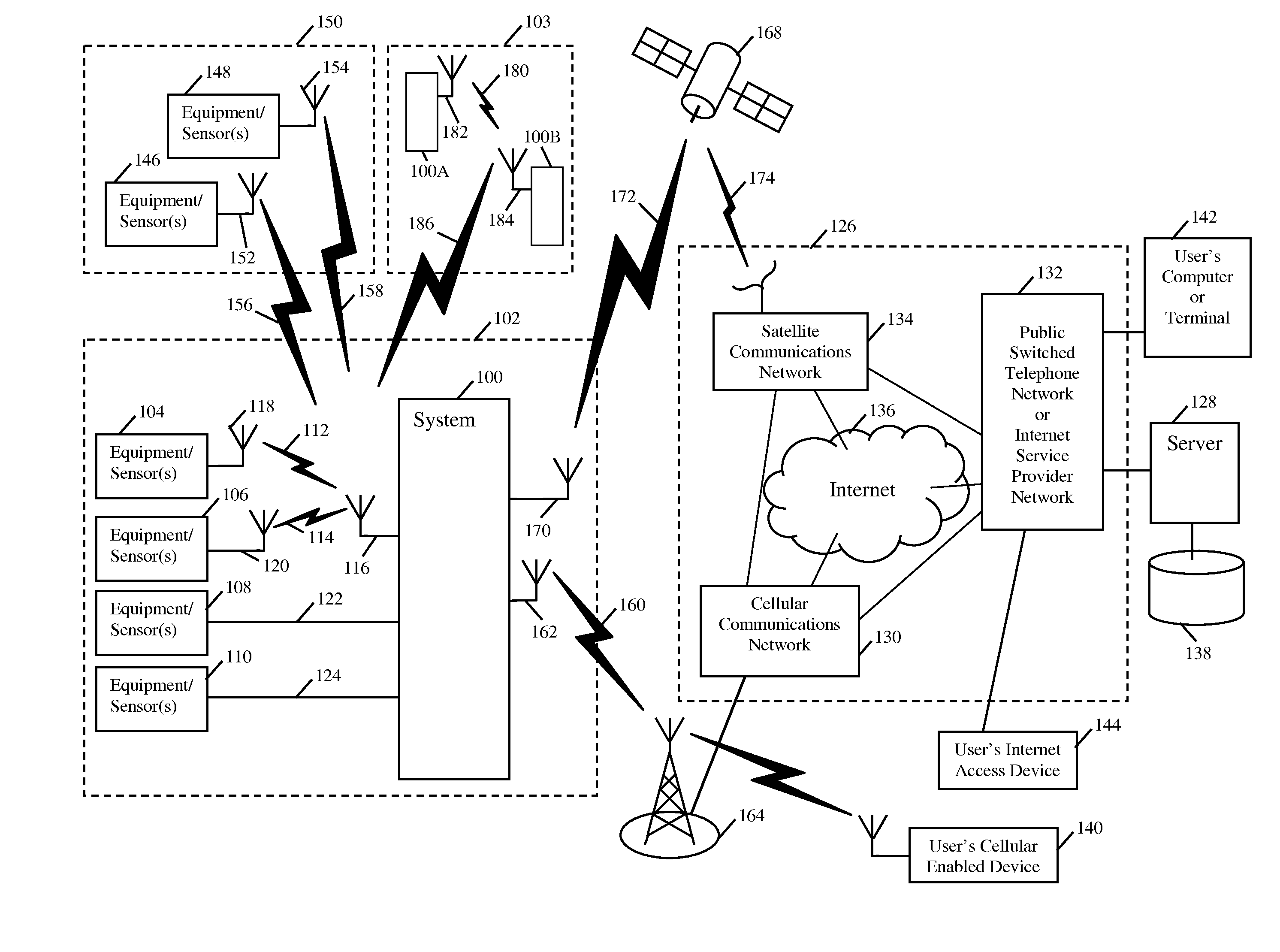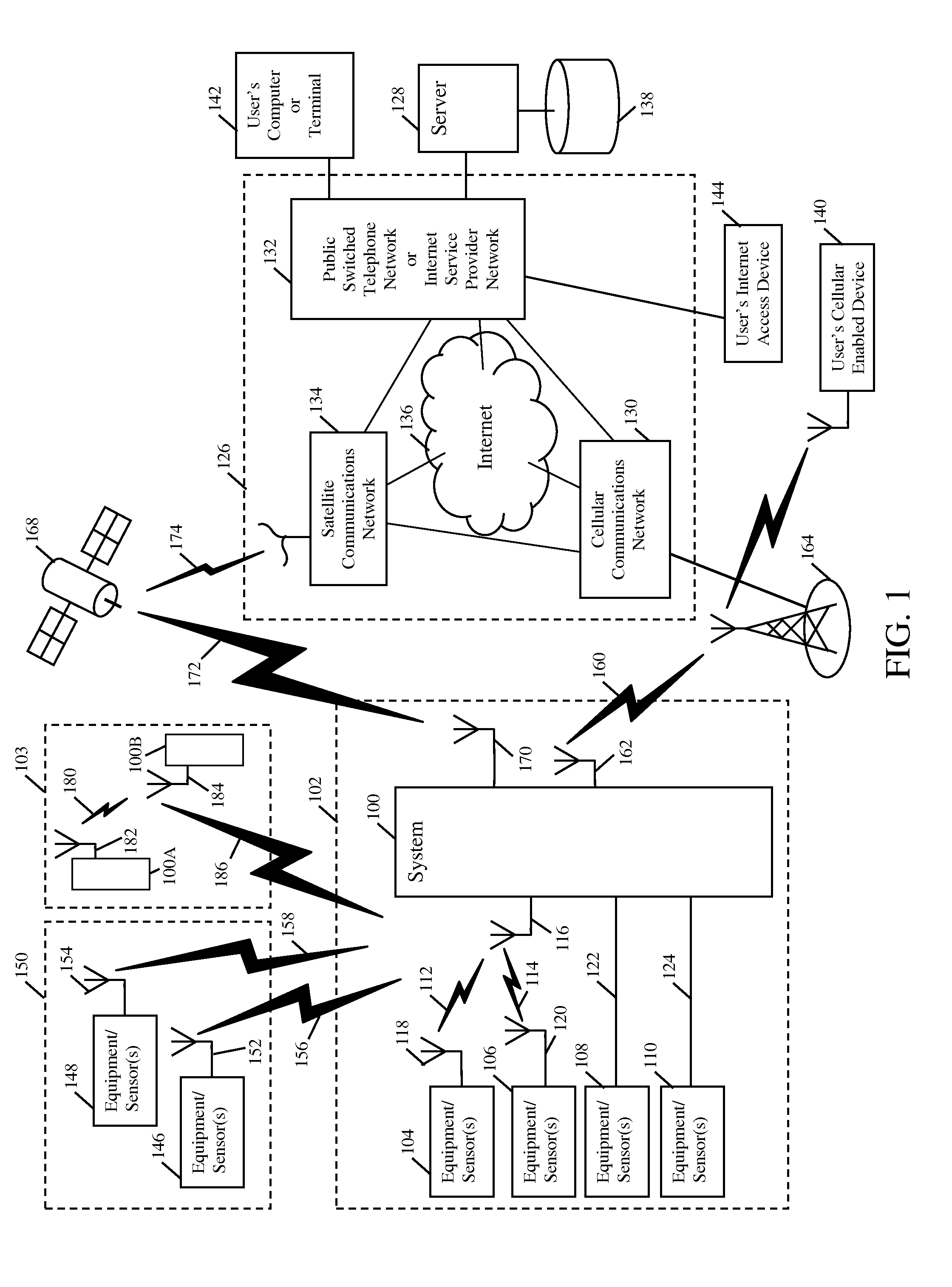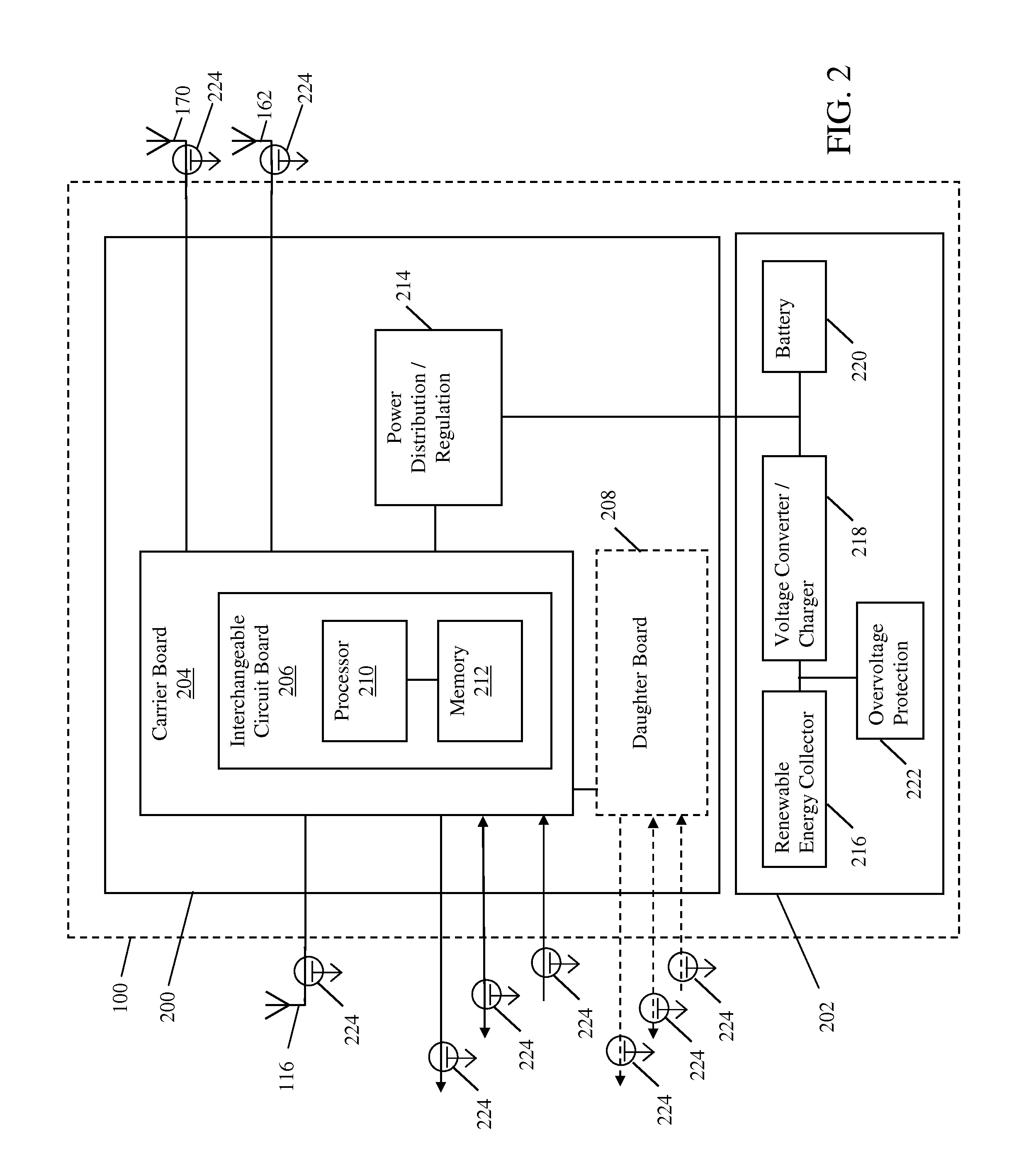System And Method To Monitor And Control Remote Sensors And Equipment
a technology for remote sensors and equipment, applied in the field of systems and methods for monitoring sensors of equipment and/or controlling equipment, can solve the problems of affecting the operation of the machin
- Summary
- Abstract
- Description
- Claims
- Application Information
AI Technical Summary
Benefits of technology
Problems solved by technology
Method used
Image
Examples
Embodiment Construction
[0027]The systems and methods described herein address both the problems identified above and other problems as understood by those of skill in the art.
[0028]Although the systems and methods described herein are exemplified by embodiments and applications in the fields of petroleum and / or natural gas, the invention is not limited to these fields.
[0029]FIG. 1 is a block diagram illustrating an interrelationship between a system 100 in accordance with an embodiment of the invention and other devices, systems (both similar and dissimilar to system 100), and networks that may be interfaced thereto. Embodiments of the invention as disclosed herein overcome the problems associated with providing a system 100, configured to control and / or monitor equipment / sensor(s) 104, 106, 108, 110, at a new or existing site 102 that does not have hardwired communications connections and / or electrical power available for use by the system 100. Embodiments of the invention as disclosed herein may be powe...
PUM
 Login to View More
Login to View More Abstract
Description
Claims
Application Information
 Login to View More
Login to View More - R&D
- Intellectual Property
- Life Sciences
- Materials
- Tech Scout
- Unparalleled Data Quality
- Higher Quality Content
- 60% Fewer Hallucinations
Browse by: Latest US Patents, China's latest patents, Technical Efficacy Thesaurus, Application Domain, Technology Topic, Popular Technical Reports.
© 2025 PatSnap. All rights reserved.Legal|Privacy policy|Modern Slavery Act Transparency Statement|Sitemap|About US| Contact US: help@patsnap.com



